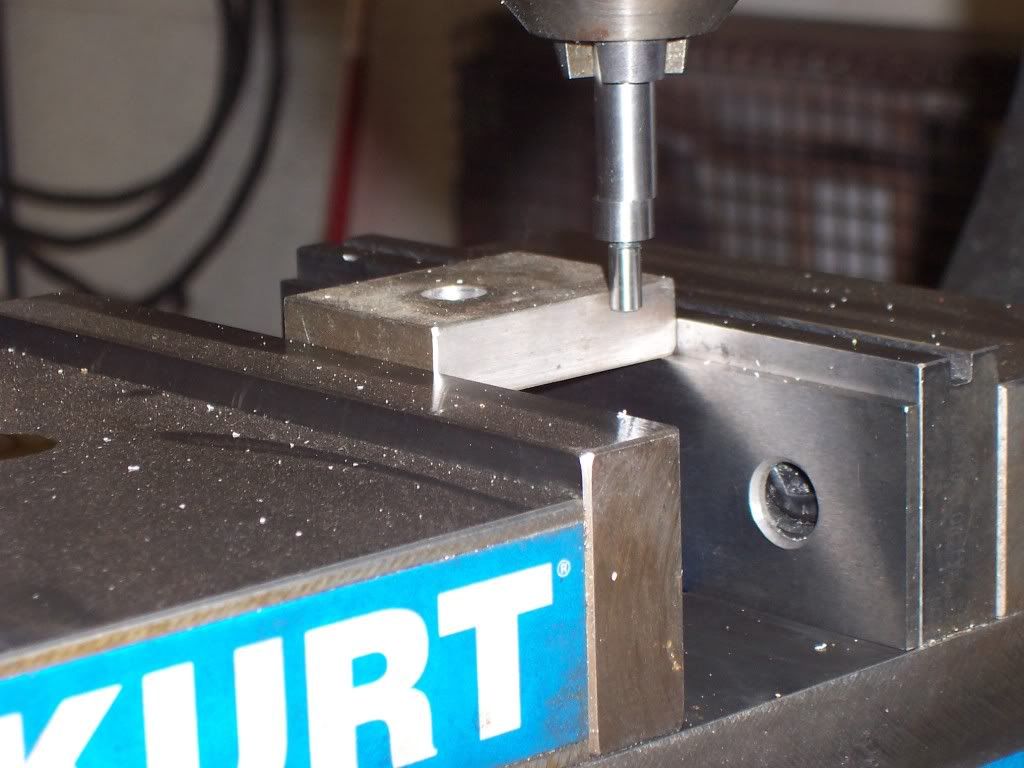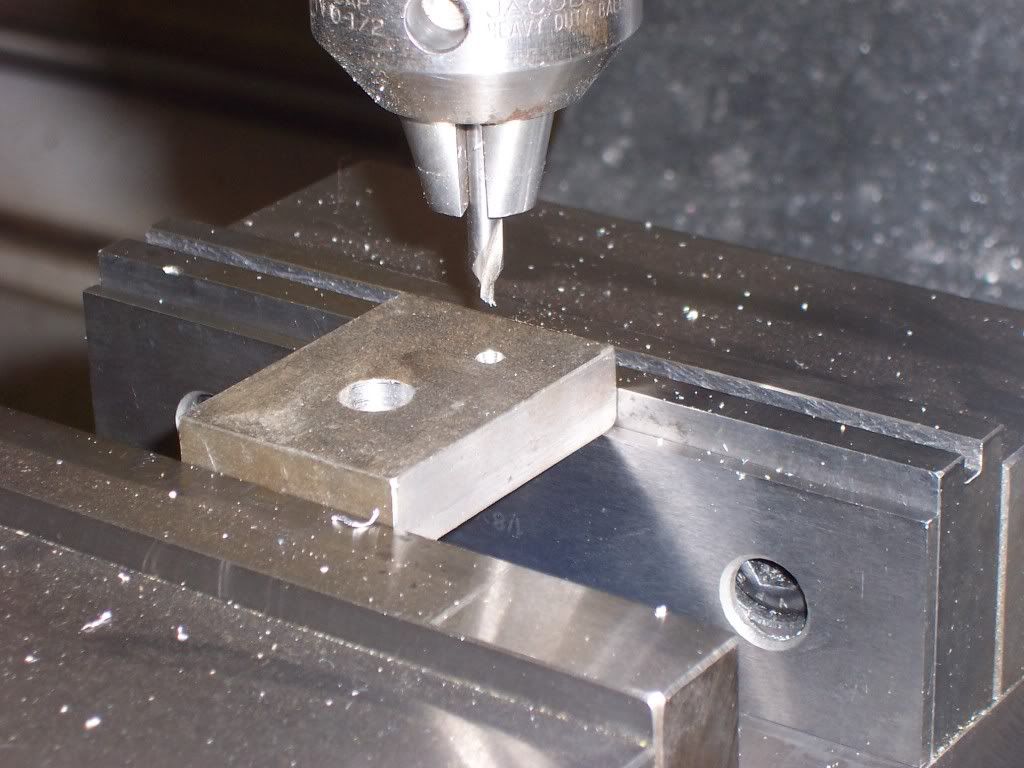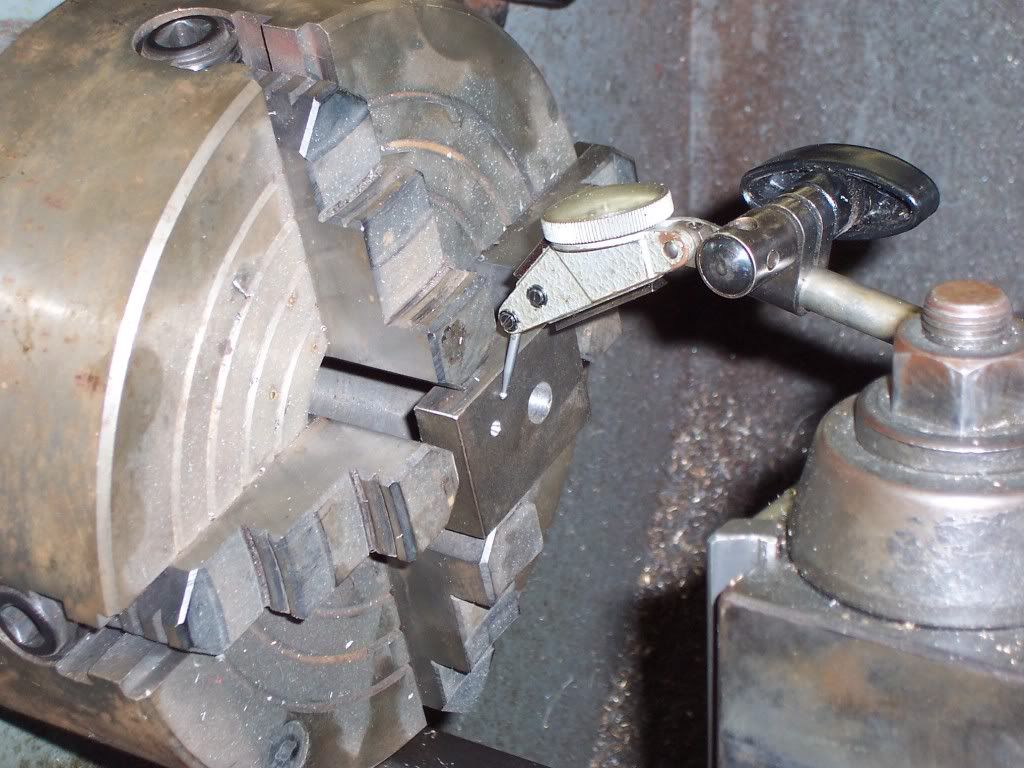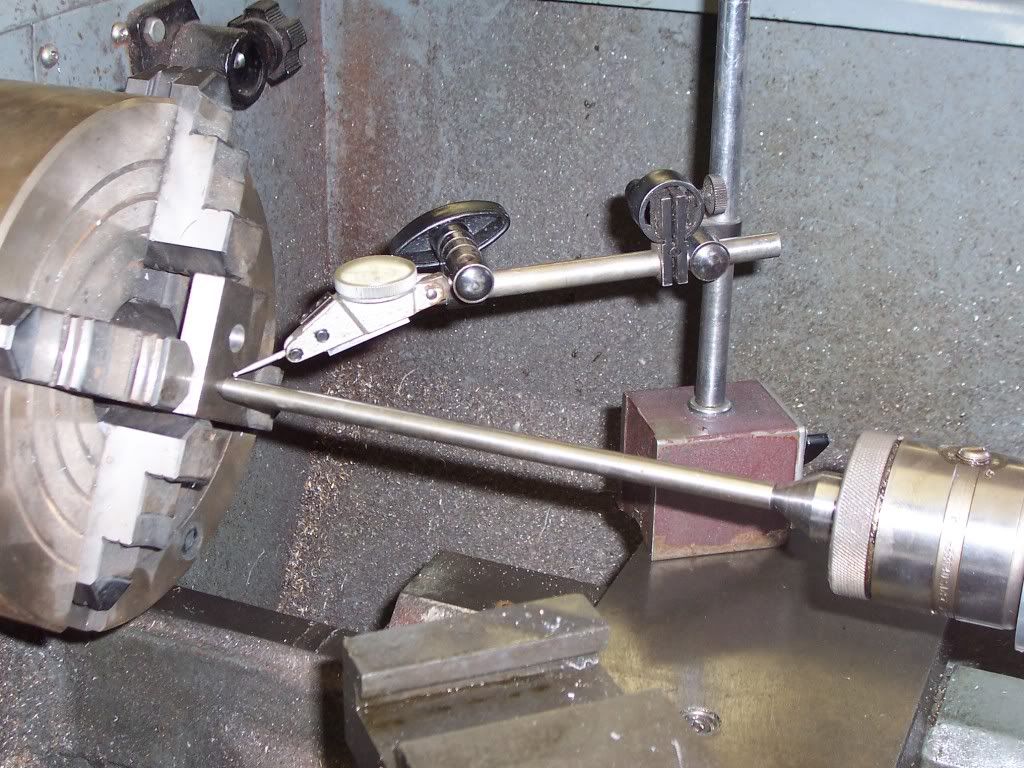Guys,
I have to drill two holes one 0.5'' wide and another 0.25'' wide in a round aluminium stock. 0.5'' wide for the piston and 0.25'' one for piston valve. I am working on building my first engine project and I found some instructions and plans here http://books.google.com/books?id=Se...page&q=popular mechanics steam engine&f=false
Now my questions is how do I drill these two off-center holes using my 7X14 lathe? The step I have, a 4-jaw chuck, Tail stock drill chuck, center drills and some drill bits. I recently learned how to center a job in 4 -jaw chuck and now I am fairly good at it
I have to drill two holes one 0.5'' wide and another 0.25'' wide in a round aluminium stock. 0.5'' wide for the piston and 0.25'' one for piston valve. I am working on building my first engine project and I found some instructions and plans here http://books.google.com/books?id=Se...page&q=popular mechanics steam engine&f=false
Now my questions is how do I drill these two off-center holes using my 7X14 lathe? The step I have, a 4-jaw chuck, Tail stock drill chuck, center drills and some drill bits. I recently learned how to center a job in 4 -jaw chuck and now I am fairly good at it











